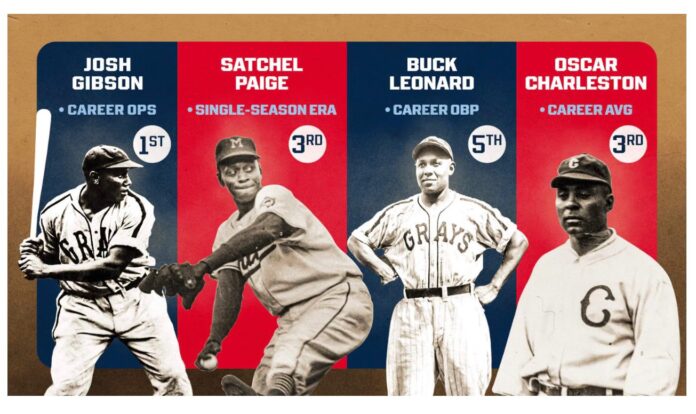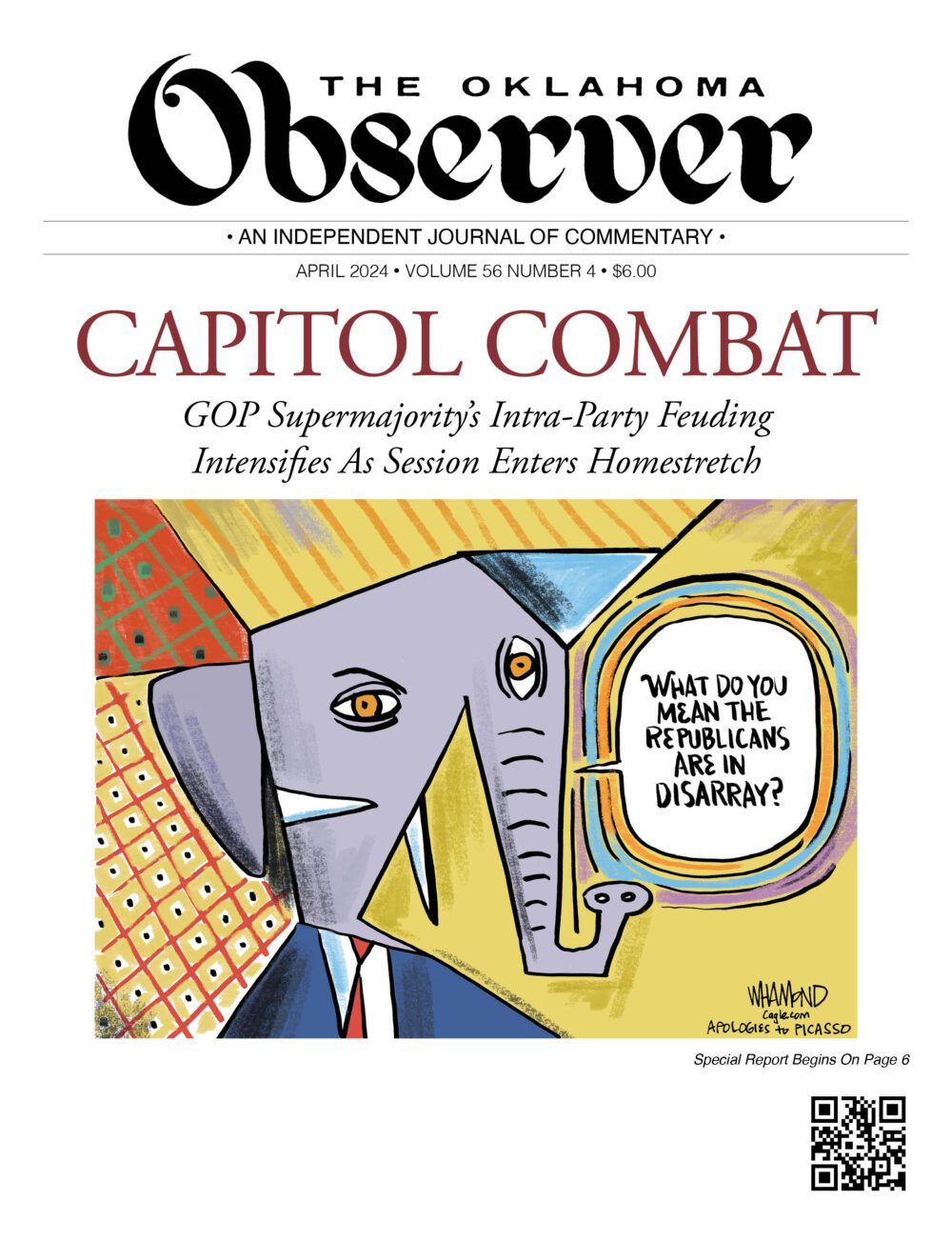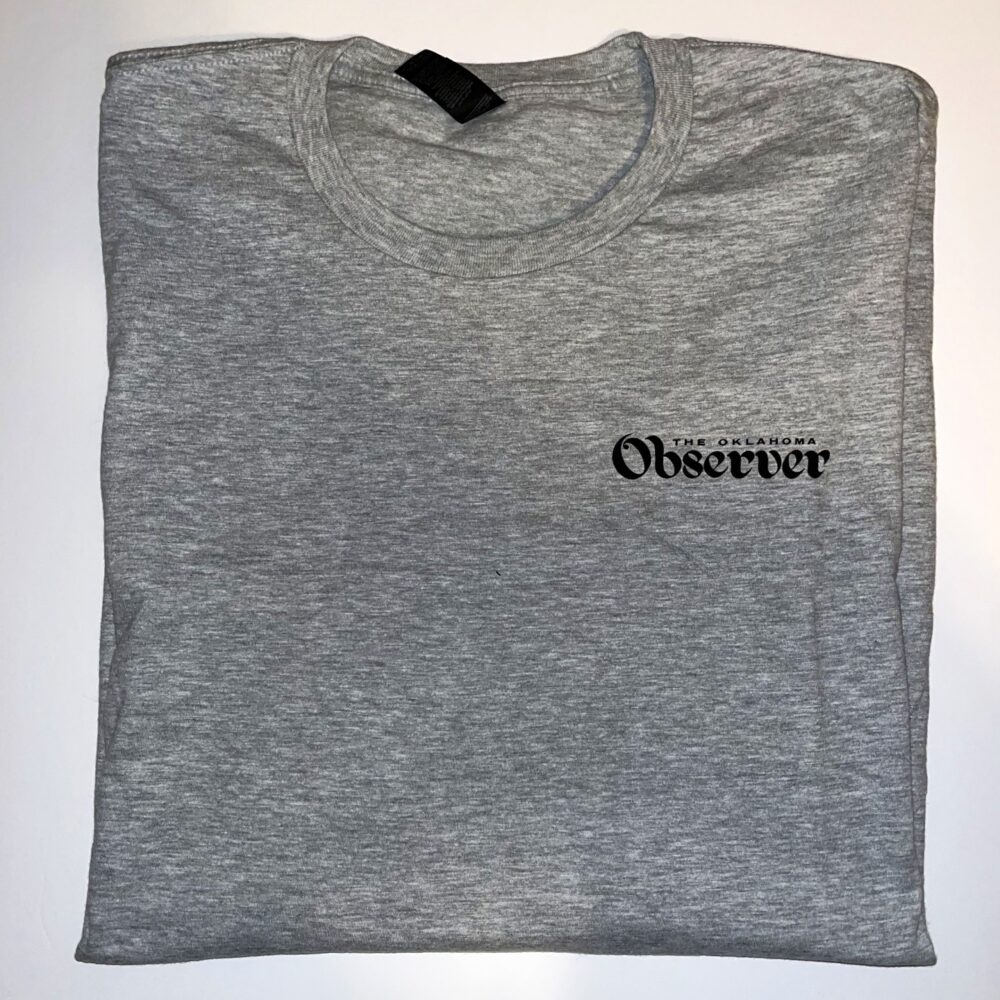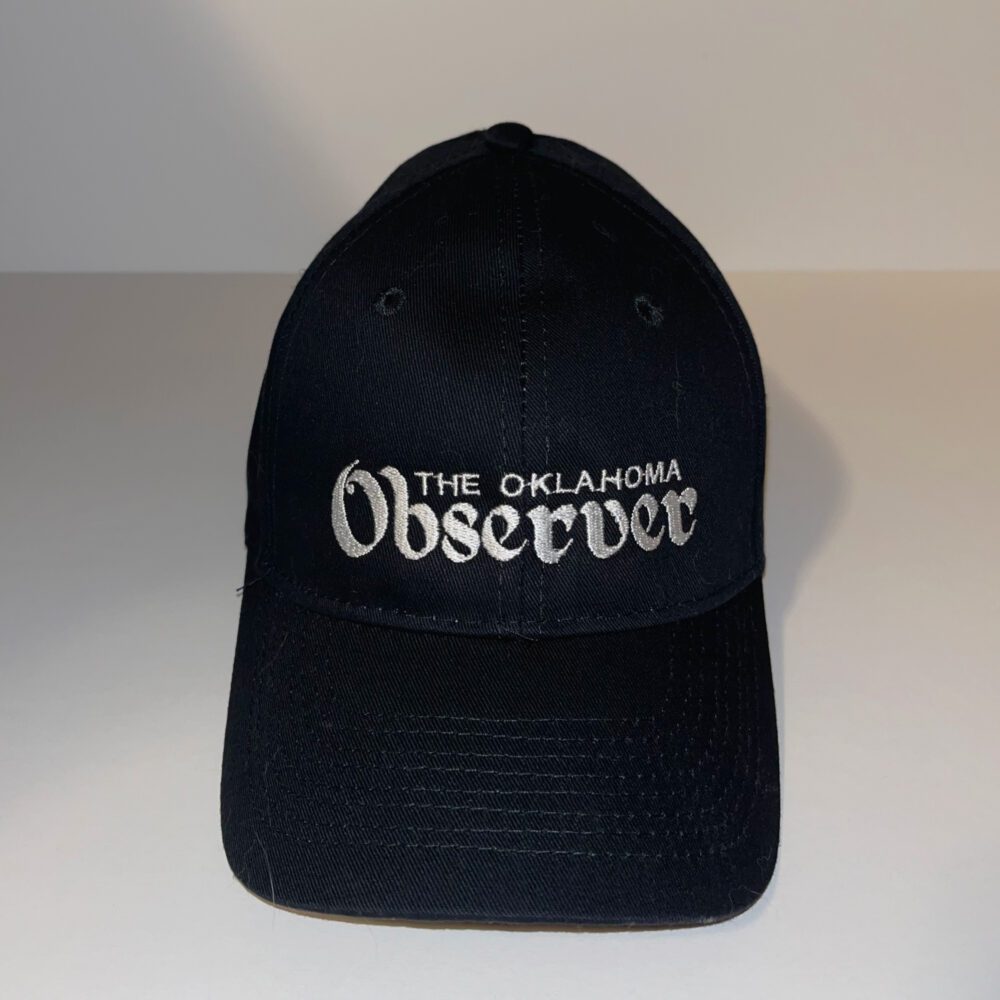Josh Gibson now reigns as the hitter with the highest single season batting average [.466] and the highest career batting average [.372] in the Major League Baseball record books.
Gibson assumed those top spots in late May when Major League Baseball announced the addition of Negro Leagues records from 1920-48 to its official totals.
The announcement acknowledged what anecdotal evidence had long maintained: that players in the Negro Leagues were comparable to those in MLB. Basic logic concludes that games between these players – often in Major League ballparks – were comparable to MLB games – and that the stats compiled therein should be recognized as such.
While most players and observers have welcomed the new inclusiveness, some self-proclaimed supporters of the Negro Leagues heritage feel the inclusion, recognition, attention, publicity somehow diminishes players now rescued from the frontiers of obscurity.
“The Negro Leagues do not need validation. Period. End of sentence.”
Trotter also wrote that “a bigger concern beyond the issue of validation is that integrating these players’ accomplishments could soften or distract from the fact racism was the only reason the Negro Leagues even existed. That should never be minimized or forgotten, and I fear that it could be.”
To guarantee the preservation of the historical record, Trotter advocated an asterisk for Negro Leagues statistics – as a historical reminder.
Maybe so, but baseball fans remember Ford Frick’s announced asterisk campaign to diminish the home run race between Roger Maris and Mickey Mantle in 1961. Any asterisks would always have negative connotations.
Also concerned about preserving Negro Leagues history, Colin Fleming, writing for The Baltimore Sun, said the inclusion of Negro Leagues records was MLB’s attempt to “set up a podium for itself, step atop it, and receive the laurels that come with righting a wrong.”
Under a headline that proclaimed: “MLB’s new stats a disservice to Negro Leagues greats, including Josh Gibson,” Fleming says that the limited statistical evidence available sets up Gibson and others for ridicule. “No one,” he says, “hits .466 except a kid in Little League. That’s not professional-level baseball player reality. Josh Gibson is being cartooned. And that’s wrong.”
I have yet to see that cartooning. Besides, Hugh Duffy did hit .440 for the Boston Beaneaters in 1894.
Fleming says posting the limited records available means that “now they’re being set up to not be taken seriously.”
Fleming adds, “Racist people have twisted brains, and they arm themselves with twisted logic. MLB is putting a player such as Josh Gibson in a position to be made light of and mocked by racists, because of this absurd premise.”
One who does not agree is Tyrus Cobb, great-grandson of The Georgia Peach. “Baseball history is a part of U.S. history,” he told the Associated Press, “and I think [the] major leagues acknowledging and incorporating the Negro Leagues is a huge step in kind of bringing all the parts of baseball history together. I think it’s actually pretty exciting that there’s a new statistical batting average leader.”
Obviously, MLB can never “do right” by those denied the chance to display their talents on the larger stage, but that does not diminish its efforts to admit those wrongs and offer what mitigation is possible.
So, two public fans of the Negro Leagues take umbrage with the inclusion of that league’s records among MLB’s? The world needs contrarians to keep us on our toes.
Introducing more fans to the Negro Leagues stars strikes me as solid line drive. Trotter and Fleming seem to fear this inclusion will somehow negate what the Negro Leagues did accomplish.
Gibson also takes the top career spot for slugging percentage, edging Babe Ruth .718 to .690, and the career OPS [on-base plus slugging] 1.177, again supplanting Ruth [1.164].
Gibson’s OPS ascendancy also drops Ted Williams [1.116] into third position.
Teddy Ballgame presents an interesting story. In his 1969 autobiography, My Turn at Bat, Williams acknowledged his Hispanic heritage [his mother was Mexican-American], observing, “If I had had my mother’s name, there is no doubt I would have run into problems in those days – the prejudices people had in Southern California.”
Though personally eluding those prejudices, Williams recognized those who had not. During his 1966 Hall of Fame induction speech, he expressed the “hope that someday the names of Satchel Paige and Josh Gibson in some way can be added as a symbol, the great Negro players that are not here, only because they were not given a chance.”
Paige received his Hall of Fame plaque in 1971, Gibson in 1972. Their symbolic inclusion now includes statistical ones as well.
Trotter cited Bob Kendrick, president of the Negro Leagues Baseball Museum in Kansas City, MO, as someone else concerned with preserving Negro Leagues history.
Kendrick said, “20 years from now,” new fans “need to know that there were two separate leagues and, ultimately, the sacrifices that were made helped invoke change. It’s also about being able to say, here’s the story.”
But Kendrick expressed the “hope [that] through these numbers, through these statistics, this will be the gateway to wanting to learn who these players were.”
I can verify the positive effect of new stats. It took me too long to appreciate that Jackie Robinson was as a great a ballplayer as he was a civil rights pioneer. I knew his story, of course, and the way he played the game no-holds-barred. But he retired from his short MLB career just before I started collecting baseball cards. I had nothing to hold in my hand; no stats to study.
Then, in its wisdom, Fleer opted to exclude Robinson from its Baseball Greats series so it could honor Lew Fonseca, Nick Altrock, Jimmie Wilson and others.
It was the work of the sabermetricians over the past 40 years who finally educated me by putting Robinson’s abbreviated career into proper perspective.
The official MLB announcement said: “It certainly was not the fault of Black baseball stars such as Gibson, Cool Papa Bell and Oscar Charleston that they were forbidden from participating in the AL or NL, and recognizing the Negro Leagues as Major Leagues is in keeping with long-held beliefs that the quality of the segregation-era Negro Leagues circuits was comparable to the MLB product in that same time period.”
Seems to be a straightforward assessment with no hint of patronization.
Separate leagues and shorter seasons? I think most fans are capable of distinguishing the leagues and know the reason behind the separation.
Besides, during the period of the new Negro Leagues stats, American and National League teams only met in the World Series and, after 1933, in All-Star games.
The NL was slower to abandon the small ball attack of the Dead Ball Era when the American League embraced the home run in the 1920s. Fifty years later, the AL’s designated hitter deprived its pitchers of a relatively easy out every nine batters. The National League added the DH 50 seasons later. Not playing exactly the same games, either.
The shorter Negro Leagues seasons – Gibson hit .466 in 137 at-bats in 1945 – reflect the financial realities of the time.
In those days before players received their fair shares of the money they were generating, players formed teams among themselves and toured the country playing each other and local nines as a way to augment their incomes. That is how Major Leaguers could see the Black players were athletic equals.
Negro Leagues teams, with their smaller market shares, faced even tougher economic obstacles and stars were plagued by the same circumstances that sent Brittany Greiner to Russia to play basketball. The Black players’ other options were in Mexico, Puerto Rico, The Dominican Republic, Cuba – and anyone who would pay for their skills.
For example, Satchel Paige did not play in either of the recognized Negro Leagues in 1932, 1935 or from 1937-39. Cool Papa Bell played in Mexico from 1938-41. He played only eight games in 1937 when he and Paige played together on the squad that won the Dominican championship.
Fresh off that win, many of those players opted to play in the Denver Post Invitational semi-pro tournament as the Dragons.
Writing in Nine: A Journal of Baseball History and Culture, Royce Parr said that Paige had a better monetary offer and did not join the team until he heard that the winning pitcher in the championship game would receive a $1,000 bonus.
He did not get that bonus as the Dragons lost 6-4 to the Halliburton Cementers of Duncan, OK – one of the top semi-pro squads of the 1930s. The Dragons won the double-elimination tourney the next day.
Ironically, except for being denied entrance into MLB, Negro Leaguers had more freedom than reserve-clause restricted MLBers toward finding the best paying jobs possible.
The eye-test – of Major League players, managers and other observers – had long assessed the Negro Leagues stars as equal to their MLB contemporaries.
That evidence and statistics accumulated largely by Seamheads.com brings us new statistics to consider – and the players who produced those numbers.
But, for Fleming, “This tragedy cannot be undone with numbers. Stats are silly compared to the injustice done to these men. They don’t need this cheap, grandstanding form of alms. They’re better than that.
“Tell the story of these players. Talk about what was done to them. Speak of how numbers are not some end all, be all. That someone’s numbers are known and someone else’s numbers are not, requires exegesis, instead of a slapdash coat of paint to cover up a tragedy, which is how this feels.”
But others agree with Kendrick and me. The new numbers present the keys to unlocking those stories.
John Thorn, MLB’s official historian, chaired the Negro Leagues Statistical Review Committee which recommended the integration of Negro League stats into the official canon. “Stats are shorthand for stories,” he said, “and … the story of the Negro Leagues is worthy of our study.”
Yes, the stats that Fleming decries give us 2,300 new players to consider. I am likely better versed than many in Negro Leagues stars, but I was not familiar with Charlie Blackwell, who hit .432 in 69 games for the St. Louis Giants in 1921.
Unfortunately for all of us, the new stats include only the years 1920-48. The earlier Negro Leagues were less documented.
Connie Mack once said that you could put Honus Wagner and John Henry Lloyd in a paper sack and “either one you pulled out, you wouldn’t go wrong.” Connie Mack saw some baseball in his life.
But Lloyd [Hall of Fame, 1977] was 37 when he joined the Columbus Buckeyes in the Negro National League in 1921. Playing also in the Eastern Colored League and American Negro League until he was 45, Lloyd still managed a .349 career batting average.
Other anecdotes come from some of the baseball greats who played from 1920-48, who competed against the Black ballplayers in off-season barnstorming tours.
Dizzy Dean repeatedly extolled the talents of Satchel Paige during his game-of-the-week broadcasts. More specifically, he once rated Paige ahead of all the pitchers he had seen, including Lefty Grove, Lefty Gomez, Dazzy Vance, Carl Hubbell – and his own never-bashful self.
Baseball fans and historians do love our stats. But we realize, too, that those numbers do not tell the whole story.
Andrew McCutchen of the Pittsburgh Pirates reacted to the MLB announcement by telling the Associated Press, “It’s great news. But it’s more than just that and the numbers. It’s great that you now get to learn about the players in the Negro Leagues.”
Cincinnati Reds pitcher Hunter Greene concurred. “It’s really exciting,” he told AP. “I’m going to have to do a little bit more research and understand some of the history to kind of rewire my brain on some of the best players.”
Greene can look up the new stats at MLB’s home page.
The ground-breaking narrative reference is Robert W. Peterson’s Only the Ball Was White, from 1970. In The New Bill James Historical Baseball Abstract, from 2001, baseball’s guru has a typically informative chapter on the Negro Leagues and their stars. Good biographies on many players can be found at baseball-reference.com.
Greene will have plenty of company. And now there are 2,300 new sets of stats available and the stories behind those players who achieved them.
I’ll see you there.
Graphic via screenshot from MLB.com







